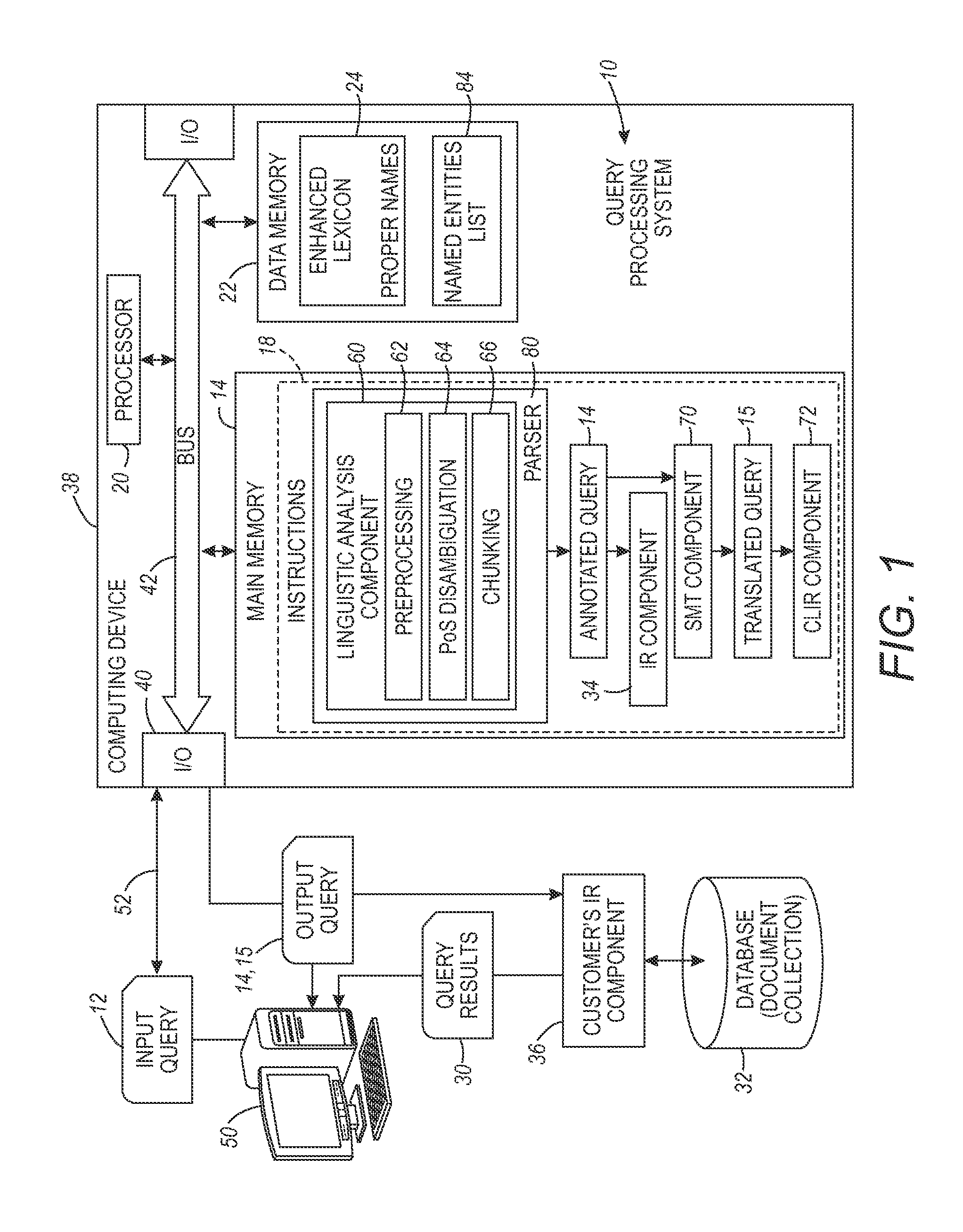Linguistically-adapted structural query annotation
a structural query and annotation technology, applied in the field of natural language processing, can solve the problems of many natural language processing (nlp) tools, inconvenient processing of queries, and inconvenient use of full sentence analysis methods
- Summary
- Abstract
- Description
- Claims
- Application Information
AI Technical Summary
Benefits of technology
Problems solved by technology
Method used
Image
Examples
example
[0218]src1: max weber[0219]t1: max mr weber[0220]t2: max weber (slight improvement)[0221]src2: albert camus la peste[0222]t1:albert camus fever[0223]t2:albert camus the plague (significant improvement)
[0224]First, the translation quality is manually evaluated. It is evaluated by comparing the two translations produced by the different translation models. Thus, each pair of translations (t1, t2) receives a note from the scale [−2, 2]:[0225]i. 2, if t2 is much better than t1,[0226]ii. 1, if t2 is better than t1,[0227]iii. 0, if t2 is equivalent to t1,[0228]iv. −1, if t1 is better than t2,[0229]v. −2, if t1 is much better than t2,
[0230]2. The translation Performance in the Context of Cross-linqual Information Retrieval
[0231]Since there is no access to a document collection, this evaluation is also performed manually. In the evaluation, the translation differences which could be expected to impact the IR quality to some extent are manually noted.
[0232]For example, a better lexical choic...
PUM
 Login to View More
Login to View More Abstract
Description
Claims
Application Information
 Login to View More
Login to View More - R&D
- Intellectual Property
- Life Sciences
- Materials
- Tech Scout
- Unparalleled Data Quality
- Higher Quality Content
- 60% Fewer Hallucinations
Browse by: Latest US Patents, China's latest patents, Technical Efficacy Thesaurus, Application Domain, Technology Topic, Popular Technical Reports.
© 2025 PatSnap. All rights reserved.Legal|Privacy policy|Modern Slavery Act Transparency Statement|Sitemap|About US| Contact US: help@patsnap.com



